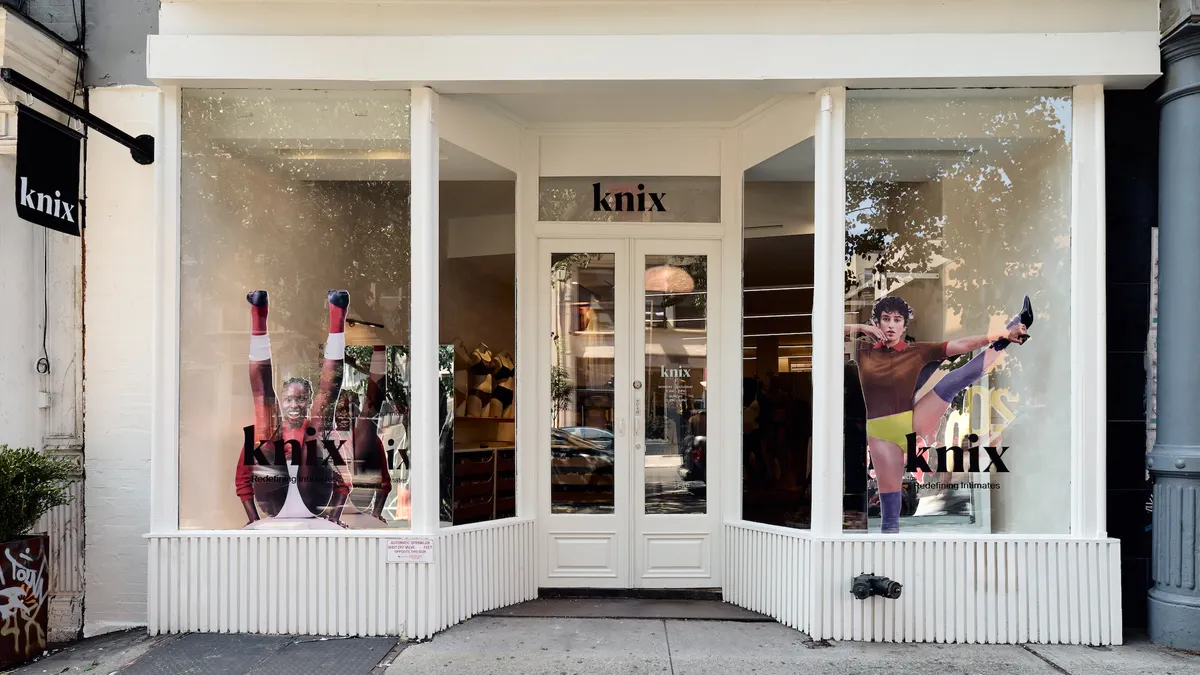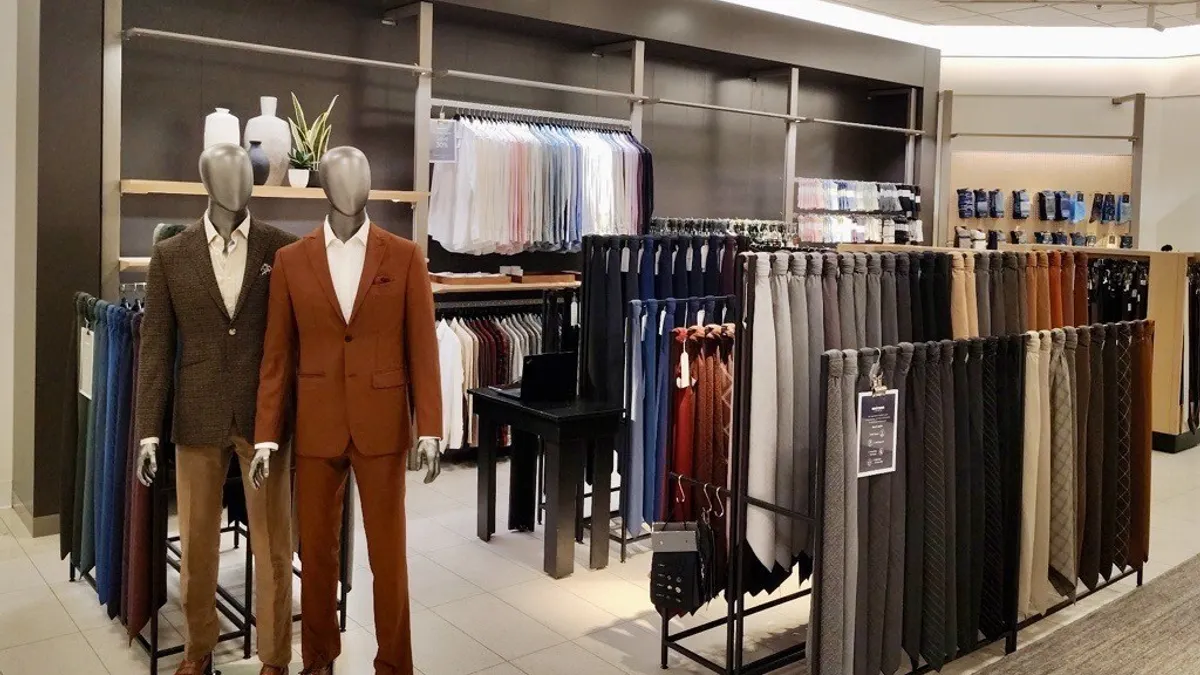Most retailers can remember a time when the internet seemed destined to wreck their business, but amid the COVID-19 pandemic, e-commerce has been a saving grace. Many larger publicly traded retailers are reporting triple-digital e-commerce growth, according to Wells Fargo analysts. Some mom-and-pop stores in recent months turned to the channel for the first time.
Unsurprisingly, with shoppers still skittish about shopping indoors, digital sales are expected to remain up. "While triple-digit growth won't continue indefinitely, we do think above-normal growth will continue through year-end," Wells Fargo analysts led by Ike Boruchow wrote in a July 23 client note.
For retailers, it's an imperfect solution, considering the higher costs of selling online, and the difficulty of fostering discovery for categories like apparel. And an incomplete one considering that uncertainty about the economy is holding back spending on any channel, with the Wells Fargo team finding that 5% of total pre-COVID demand could be lost.
Moreover, as the pandemic wreaked havoc on the supply chain, ordering online led to disappointment for many shoppers stuck at home. Even Amazon faced disruptions that led it to walk back its one-day delivery ambitions, limit its assortment and postpone its midsummer Prime Day sale indefinitely.
That was a surprise that could have consequences. Customer expectations for the last two decades have been set by Amazon — speedy delivery, cheap prices and an endless array of goods — and retailers have followed, or tried to. But many consumers, left to think about climate change and the viability of their local retailers, and learning to live with delivery delays even from Amazon, may emerge from the pandemic with new priorities.
"During the pandemic, order turnaround times are uncontrollable, and it's forcing consumers to have patience again. That patience has awakened a new thought process, 'What if I don't really need my items this quickly? What are the hidden costs that I'm not seeing?'" DeAnna McIntosh, founder of retail and e-commerce consultancy The Affinity Group International, told Retail Dive in an email. "On social media, during the pandemic, I've seen a resurgence in conversation around slow fashion, upcycling, and sustainability — especially amongst millennial consumers."
The opportunity
That involves more than the uber-practical three-legged stool of convenience, price and availability that has been spinning Amazon's successful flywheel. But in order to win over the consumer who's having that conversation, a brand has to make an alternative argument.
Local booksellers have successfully done this for years, selling the exact items offered by Amazon at higher prices, and taking longer than Prime delivery to get orders into their customers' hands. Barnes & Noble CEO James Daunt, himself an independent bookseller whose company bought the U.S. chain last year, said he believes that the relationship some retailers have with their customers undermines Amazon's Prime advantage.
"As long as what you do is really authentic and true to your principles, then, yes your customer will stick with you because the loyalty will be extraordinary," he told Retail Dive in an interview, noting that most consumers are fine with delivery in three days "if it's reliable."
"I personally think the irony is that we're much, much more difficult for Amazon to compete with than Amazon is for us," he also said. "Because you can't, through an algorithm and a website, engineer the loyalty that we can, because our skills and our experience are completely unbeatable."
Who has the edge
Retailers can break through the demand for free high-speed delivery and an endless aisle by telling good stories, making a sustainability case for their delivery options, touting the advantage of their limited — or "curated" — assortment and otherwise fostering good relationships with customers.
"This conversation has created demand for indie brands, where consumers can have an emotional connection to the products and the founders behind them," McIntosh said, noting that several fashion houses including Gucci have recently taken steps to slow their design and production cycles in the name of sustainability and creativity. "The rules of retail are being thrown out of the window and Covid has given us a chance to create a better, more sustainable industry for the entire retail ecosystem."
In fact, smaller sellers may actually have an advantage over larger ones, according to Forrester Research Principal Analyst Brendan Witcher. While many DTC brands, or traditional retailers with nascent digital operations, work to achieve scale, that may not be possible, he said. Rather, the larger the e-commerce operation, the more diluted the profits. Rather than reach for scale, smaller retailers just reach for sustainable profits.
"I think that online retail is only successful for smaller retailers," Witcher told Retail Dive in an interview. "It's designed for the small business that's passionate about their product. They don't need to support a full staff, the costs are not as great. There are so many costs to online retail that if you're a certain size, not too big, you can outsource or do without."
A new standard?
That doesn't mean that retailers can ignore the reality that Amazon has reset norms around fulfillment and endless assortment. But the pandemic could be providing an opening for some alternative standards.
That's especially true now, with evidence that consumers at the moment are especially willing to ditch brands that don't or can't follow through, according to Forrester's Witcher and Matt Sargent, principal at retail consultancy Sargent Up North. Witcher calls it a marketing reset, where previous loyalty is easily abandoned. And Sargent believes it's a potential pitfall even for Amazon.
"People are making changes," Sargent told Retail Dive in an interview. "When people try a brand they like or used to like and something goes wrong, they are much more likely to switch brands. People are making these choices — that is the potential danger that Amazon and Whole Foods has with people potentially leaving Prime."
The "assisted sale," a higher level of customer service that was once a staple at retailers like department stores, is one way to woo customers at a time when they're ready to make a leap, according to Sargent. That's harder to do when a retailer is big and has a huge, varied assortment, and it's harder to do online, he said.
"That growth of the 90s that seemed brilliant at the time is hard to manage online," he said. "There needs to be a lot more alternatives in terms of what they're doing, they have to use a customer-designed approach to understand that. But your success is predicated on getting it right. Best Buy has been able to make this leap and Macy's hasn't."
At a time when consumers are awaiting a solution to a disease outbreak that has upended their lives and thrashed the economy, there's another quality that may be more important to them than fast delivery or a wide assortment, according to Michael Stefanakos, chief revenue officer at retail solutions company FieldStack, which works with retailers of all sizes on unified commerce platforms.
"I do think that that certainty is what people are looking for," he told Retail Dive in an interview. "When they've had that certainty at Amazon and others and now they can't, it is an opportunity for local retailers to fill the gap."
That takes a level of inventory control that many retailers, especially independent physical stores, aren't used to, he said. But any retailer — "small, mid or large" — can and should know what they have in stores "at any given time," making fulfillment or special orders as easy as possible. Today that probably means curbside fulfillment and some kind of e-commerce, even at small retailers, Stefanakos said.
"If you're only competing with Amazon on price you're going to lose because it's unsustainable from a retail standpoint," he said. "For brick-and-mortar retailers the thing that keeps them around is the experience that people have when they go there and the fact that they're part of that community. That's really important to people, it's part of who they are. Certainty — having that ability in a retailer — that is one thing that retailers can market themselves on today, and for customers it's cross-generational. You have every opportunity as a brick-and-mortar retailer to provide personal interactive service that you can't get online."






















